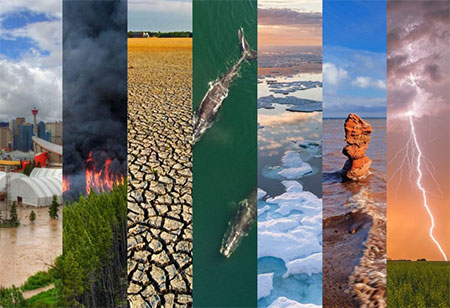The Hidden Dangers of Environmental Hotspots: What You Need to Know
By Peterson content writer

An environmental hotspot is an area where the en- vironment is under signi- ficant threat due to hu- man activity. Environ- mental hotspots are a serious problem for our planet. Every day more and more areas are im- pacted by human activi- ties, with serious con- se- quences for nature and human health. Such areas are often characterized by high levels of pollution, habitat destruction, and resource depletion.
Environmental hotspots include locations where air quality leaves much to be desired, regions with high levels of deforestation, and water bodies contaminated by toxic waste. These places have serious impacts on biodiversity and ecosystems, leading to the extinction of many species of vegetation and animals, and exacerbating the spread of disease.
The far-reaching effects of environmental hotspots are not limited to nature. They also affect socio- economic conditions in the regions where they are located. Marginalized communities, which often live in poor and densely populated areas, bear the brunt of environmental damage. This can exacerbate poverty and social inequality, and increase the risk of disease and premature death.
As such, creating catalogs of environmental hotspots is an important task for governments, nonprofit organizations, and research institutes. These lists can help better understand the scope and extent of environmental threats around the world and develop solutions to address these critical issues. They can also be used to guide conservation efforts and policy development, which can lead to better combating environmental hotspots and reducing their impact on nature and humans.
Where to see examples of environmental hotspots?
Environmental hotspot directories are a tool to help identify the most problematic areas in the world where natural resources are threatened by human activities. Often such directories are made to analyze data on environmental problems in different regions.
The importance of environmental hotspot directories is that they allow for more precise identification of areas that require the most urgent attention and protection. Governments can utilize catalogs as a resource to create laws that safeguard the environment and preserve the diversity of living organisms. They can also be used by non-profit organizations to guide conservation efforts and raise public awareness of the importance of conservation and the environment.
One such directory is the Environmental Hotspots directory at EcoHubMap. The Environmental Hotspots directory is a cluster of environmental hotspots from around the world that require the attention of public figures and the population of each country.
The directory already contains close to 200 hotspots from all over the world. All hotspots are divided into several "blocks:
- Water: Ocean, Water conversation, Sewage, Sea level rise, Rivers, Lakes, Drying, and Acid Rains.
- Air: Air pollution, Climate.
- Forest: Forest fires, Deforestation.
- Waste: Oil, Plastic Pollution, Toxic waste, Chemical pollution.
- Military: Military pollution.
- Economic activity: Mines, Nuclear issues, Intensive farming.
- Wildlife: Poaching, Coral reefs.
For ease of searching you can use the world map, where each hotspot is listed, as well as a filter that allows you to filter hotspots by country and category. Each hotspot has a description, photos, and videos of the location, information about the location, and information about the organizations that are involved in solving the problem in that hotspot, and suggested solutions to the problem of that hotspot. Catalogs that provide information on environmental hotspots help governments, organizations, and individuals better understand the scope and extent of environmental threats around the world. This allows them to develop solutions to address critical pollution problems. The use of such directories can form the basis for measures to protect human health, biodiversity, and economic sustainability, as well as the equitable distribution of environmental risks.
Who can add information about the environmental hotspot?
EcoHubMap is an online platform that provides the ability to add environmental hotspots to the catalog - https://www.ecohubmap.com/add/hotSpot. It is a great tool for governments, organizations, and individuals who want a more complete picture of the scale and extent of environmental threats around the world. To add your environmental hotspot to the catalog, all you have to do is provide a name, category, and location. If you have additional information, you can also add it to the platform. This can be very useful for people who want to learn more about a particular environmental problem and try to find solutions to fix it. Also, adding environmental hotspots to the platform can help build a more complete picture of the environment as a whole and allow for a better understanding of what problems need to be addressed first. Overall, EcoHubMap is an important tool for those who care about the future of our planet and want to contribute to conserving its resources.




